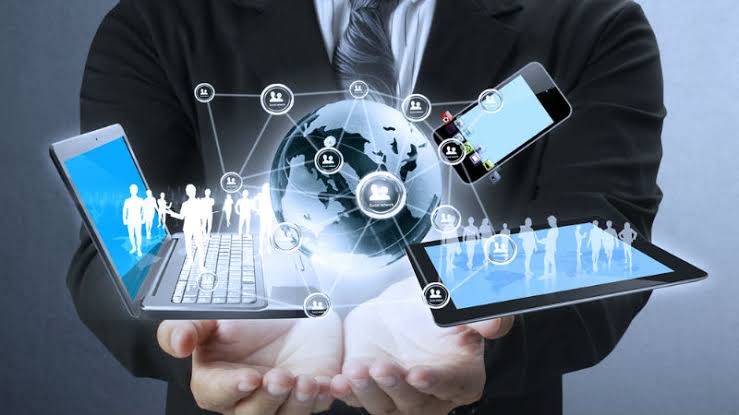AI Revolution
This is not a new trend; it has been around for quite some time. We already use a number of artificial intelligence (AI) goods and services in our everyday lives. AI enables computers to imitate human intelligence and accomplish tasks while also developing itself based on the data collected. AI services such as spam filters, personal assistants like Siri, and Google Translate’s language recognition capability are all widely utilized.
The current technology, on the other hand, isn’t even close to reaching its full potential. AI will revolutionize practically every industry, for example, by reducing CO2 emissions and lowering operating costs through automation. Some businesses have stated that they intend to enter the market with increasingly powerful AI-based solutions.
This revolution demonstrates that robotics, machine learning applications, and black box algorithms will have a significant impact on our future. This movement presents both opportunities and challenges, such as more efficient communication and biased discriminating algorithms. It affects individuals, businesses, and society as a whole.
How we take use of those opportunities and deal with the associated threats will be revealed in the future. In any event, one thing is certain: AI will have an impact not only on businesses, but also on our daily lives.
Rise of Social e-commerce
During the Covid-19 epidemic, e-commerce grew dramatically. To stay competitive in the ‘war for the digital marketplace,’ e-commerce enterprises must build brand recognition.
Most businesses now utilize social media to build their brand, according to research that show 87 percent of e-commerce customers feel they can get ‘purchase’ data from social media. Millennials and Generation Z, in particular, are more likely to be influenced by these platforms. As a result of the rising use of social media, platforms like TikTok, Instagram, Twitter, and Facebook became more powerful avenues for’social marketing.’
As a result, we should expect to see more of this type of “social e-commerce” in the future.
‘Social ecommerce’ is exemplified through influencer marketing. ‘Influencers’ write reviews of items or services, recommend them, and try to persuade their followers to purchase the endorsed item.
While most people despise advertisements, they appear to prefer being ‘inspired’ by someone they admire or admire. As a result, influencer marketing has become a very viable strategy for a variety of brands: the industry as a whole has grown from €1.7 billion in 2016 to €13.8 billion in 2021. We may anticipate to be affected even more in the future, thanks to increased corporate investment for content marketing and its demonstrated effectiveness.
Crisis behavior
Life as we knew it changed when the Covid-19 pandemic struck. Boarders, as well as retail and office spaces, were closed. The pandemic triggered a crisis, leaving civilization in limbo. When we reflect on previous and future scenarios during times of crisis, such as this one, we find it difficult to break free from our current attitude. This is referred to as projection bias by psychologists.
A social rebound effect can be shown in actual behavior. When the current crisis is over, we’ll want more of what we don’t have today.
Tragedies, disasters, and health crises, according to social psychologists, make us more aware of our own death for a period of time. Rationally, you’d think that this thinking would make us a better nation.
In today’s society, you can observe this process in action. As previously stated, we will crave what we lack to a greater extent. In terms of consumer behavior, this entails a total rediscovering of everything previously thought to be ‘impossible.’ This isn’t only about shopping sprees, pricey vacations, or going out to eat.
We cling to cultural norms that make us feel safe and secure, and we value them. Shaking hands was common for most persons several weeks after the Covid-19 measures were removed, according to research in various European countries. Shaking hands, for example, will be reintroduced in no time.
Personalized economics
The surge in online transactions, which has grown dramatically since 2020, is driving a more personalized interaction with the customer. Organizations are attempting to win the competitive struggle with the help of omnichannel sales techniques.
Organizations and consumers alike drive the desire for a personal relationship. Organizations can use analytics to acquire a better understanding of the complete customer journey as a result of digitalization. Consumers, on the other hand, want a personalized strategy that caters to their specific demands, regardless of the channel they use.
Omnichannel users, it turns out, make more store visits and are more likely to recommend brands to friends and family. It’s worth experimenting with an omnichannel strategy. The shift to an on-demand and app economy, on the other hand, necessitates a change in the purchasing experience. The omnichannel retail experience becomes even more personalized when digital advances such as artificial intelligence are added.
Organizations that can differentiate themselves with their omnichannel approach can benefit from the rapid advancement in personalization of client experiences. It attracts and maintains customers by creating and delivering value to both consumers and the company’s own brand.
Health Consumers
Since the pandemic, people have been more aware of the importance of living a healthy lifestyle. Not only do the elderly appear to be vulnerable to the virus, but so do the younger generation’s struggles with weight and underlying ailments. Because one of the most important determinants is lifestyle, there has been a greater emphasis on prevention and leading a healthy lifestyle.
People strive to motivate one another to exercise more and live a better lifestyle. However, challenges such as coping with stress and achieving a work-life balance cause people to be more concerned about their mental health.
Changes that come with increased awareness for a healthier lifestyle are also adopted in the service industry. Insurers are contemplating lifestyle-based insurance, while companies are putting a premium on their employees’ emotional and physical well-being.
Various businesses are being disrupted by this trend in consumer preference for quality over quantity and an emphasis on health. Locally produced high-quality goods and various health-monitoring devices are becoming increasingly popular. As a result, businesses must examine their product content more closely and, in certain cases, rethink their strategy. Companies and start-ups can now adapt to new customer needs as a result of this evolution.
Focus on talent and well-being.
Many companies’ management teams nowadays do not simply grant their employees the rights and privileges they require. They go even further and look for ways to boost their employees’ happiness, and hence their overall well-being.
Worldwide, there is an increasing trend in the number of people suffering from burnouts. During the Corona crisis, the number of burnouts has risen. Loneliness, work-related stress, and mental health difficulties plague people. Working from home is also important. When employees work (for the bulk of the time) from home, it’s more difficult to keep track of their well-being.
Organizations are expected to set up the (home) working environment of employees in such a way as to minimize burnouts and stress as much as possible as awareness of the causes and consequences of burnouts and stress grows. Individuals and organizations are becoming more aware of the value of mental and physical health.
Furthermore, according to a study, happy employees are around 12% more productive. Many firms are now focusing on establishing a balance between employee growth possibilities, well-being, and productivity in order to respond to employee demands and happiness. They recruit loyal, hardworking employees as a result, as well as lower absenteeism and staff turnover.
Team-up!
The participatory society has grown in popularity in recent years. Consumers and employees alike are more eager to join in and assist one another in organizational and daily life operations. Many businesses are introducing a “think tank” in the shape of a client council these days.
The Covid-19 epidemic is one among the reasons for the rise in participation society. This gave rise to two kind of movements. Solidarity movements were the first. An online platform, for example, was built where people could join up to provide free assistance to others in need. The (online) exchange of knowledge between organizations and their consumers, within organizations, and across various organizations constituted the second movement. Organizations aim to include customers in order to stay in touch with them, such as through online panels. Customers can give and receive feedback as well as ask questions. Organizations can more easily reach their target audience and exchange and gather information thanks to this online focus. Fewer queries and improved customer satisfaction result from more efficient and effective consumer information. This, in turn, contributes to a better client experience.
Furthermore, it has proven to be extremely beneficial for teams inside universities or between institutions to collaborate (online) and share information. All sides can grow and become stronger through sharing, receiving comments or suggestions, as well as listening, learning, and discovering.




